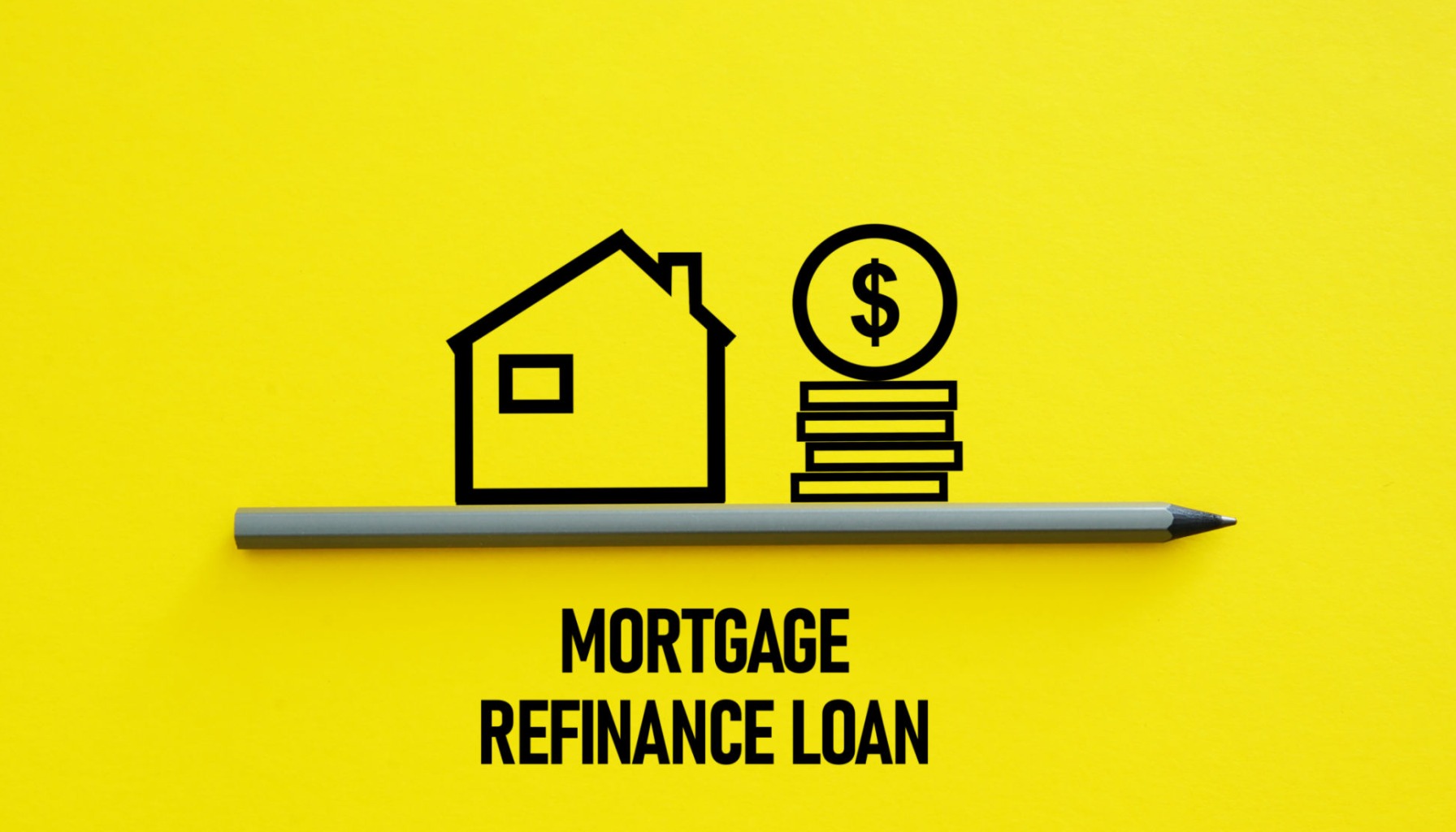Feeling overwhelmed by the constant ups and downs of mortgage rates? You're not alone! Today, I'm diving deep into the latest news: the national average 30-year fixed refinance rate has decreased to 6.81%, according to Zillow's latest data. This represents a welcome drop of 21 basis points from 7.02% on Sunday, September 28, 2025. Let’s break down what this means for homeowners and prospective buyers, and whether now might be the right time to consider refinancing.
Mortgage Rates Today: 30-Year Fixed Refinance Rate Goes Down by 21 Basis Points
Digging into the Data: What the Numbers Tell Us
First, let’s look at the numbers on the mortgage rates now, all data provided by Zillow:
- 30-Year Fixed Refinance: 6.81% (down 21 basis points)
- 15-Year Fixed Refinance: 5.72% (down 22 basis points)
- 5-Year ARM Refinance: 7.41% (up 6 basis points)
We might be wondering if these were good rates. Let's look at trends to understand if these rates are expected to go up or down.
Overall, we can see a positive trend for long term rates. However, the short-term 5 year rate is trending upward which is not a good sign for the overall market.
Is Now the Right Time to Refinance?
This is the question on everyone's mind! A 21-basis-point drop is definitely a step in the right direction. Whether it's the right time for you depends on a few factors:
- Your Current Interest Rate: If you're currently paying a rate significantly higher than 6.81%, refinancing could save you a substantial amount of money over the life of your loan. As someone who has refinanced in the past, I know firsthand the power of shaving even a fraction of a percent off your rate.
- Your Financial Situation: Are you planning to stay in your home for the long term? Do you have a stable income and good credit? Refinancing involves closing costs, so you need to ensure you'll recoup those expenses through lower monthly payments.
- Your Goals: Are you looking to lower your monthly payment, shorten your loan term, or tap into your home equity? Refinancing can help you achieve these goals, but it's crucial to weigh the pros and cons carefully.
Here's a simple table to help you decide:
| Factor | Considerations |
|---|---|
| Existing Rate | Is it considerably higher than current rates (1% or more)? |
| Time in Home | Planning to stay for several years to recoup refinancing costs? |
| Financial Stability | Solid income, good credit score for best rates? |
| Refinancing Goals | Lower payments, shorter term, or tapping into equity? |
What's Driving These Rate Fluctuations? Understanding the Fed's Role
The mortgage rate world doesn't exist in a vacuum. Several factors influence these changes, with the Federal Reserve playing a major role. On September 17, 2025, the Fed made a noteworthy decision and cut its benchmark interest rate for the first time this year, lowering it by a quarter percentage point to a range of 4.0% to 4.25%.
This decision followed a period of holding rates steady after a series of increases in 2024. Now, let's get into the weeds on what's likely happening behind the scenes:
- Economic Growth vs. Inflation: The Fed is walking a tightrope, attempting to lower inflation without stalling the economy. Recent data shows a robust GDP growth of 3.8%, but stubborn inflation (2.9% core PCE price index) hasn't allowed the Fed to be as aggressive as they'd like.
- Treasury Yields: The Mortgage Rate Compass: Mortgage rates are closely tied to the 10-year U.S. Treasury yield. Lenders use these yields as a basic measure for their 30 year mortgage rates.
- The “Spread”: A Key Consideration: The difference between the 10-year Treasury yield and mortgage rates is known as the “spread.” Typically it's between 1 and 2 percentage points (100-200 basis points) to compensate for the risk in mortgage-backed securities. Experts are saying that rate is actually higher than that right now.
The Fed's Decision: Implications for Mortgage Rates and the Housing Market
So how does the FED interest rate cut tie into mortgage rates? Here are some takeaways:
- Moderating Effect on Mortgage Rates: The Fed's rate cut is working to lower the Treasury rates to a degree which in turn translates into lower mortgage rates
- Potential for Gradual Decline: Further improvements are contingent on the Fed's future moves, driven by inflation and economic data. Some people think that we could see rates drop under 6% in 2026. But people also though there wouldn't be inflation in 2022 and 2023!
- Caution is Key: Stubborn inflation could halt or even reverse the decline. This would result in upward pressure on interest rates for mortgages.
What does this mean for the housing market?
- For Buyers: Lower rates can improve affordability, but the wide spread may limit the impact. Competition for great houses may still be fierce.
- For Sellers: Some “rate-locked” homeowners (those who are stuck in paying super low interest rates) that were hesitant to sell their houses might come back to the market.
Personal Thoughts and Opinions
As someone who has followed the mortgage market for years, I believe we're in a period of cautious optimism. The Fed's initial rate cut is a positive sign, but inflation remains the X factor. Even though experts are saying that there could be a continued easing, I personally believe to be wary of a potential risk of further inflation.
I also believe that the “spread” between Treasury yields and mortgage rates is critical to watch. If the spread narrows, mortgage rates could see more significant declines.
Ultimately, it's crucial to do your homework, consult with a mortgage professional, and make informed decisions based on your individual circumstances.
Recommended Read:
30-Year Fixed Refinance Rate Trends – September 27, 2025
Looking Ahead: What to Watch For
- Inflation Reports (PCE and CPI): Will confirm whether inflation is on a sustained downward path.
- Labor Market Data: Softening job growth could trigger further rate cuts by the Fed.
- The Spread: Normalization of the spread is key for more meaningful relief for borrowers.
Conclusion: Navigating the Mortgage Maze
The recent drop in refinance rates offers a glimmer of hope for homeowners looking to save money. However, the current market is complex, with many moving parts such as inflation rates or even potential issues such as international tensions.
By understanding the factors that influence these rates and carefully evaluating your own financial situation, you can make informed decisions and navigate the mortgage market with confidence.
Maximize Your Mortgage Decisions
Thinking about whether to refinance now? Timing is critical, and having the right strategy can save you thousands over the life of your loan.
Norada's team can guide you through current market dynamics and help you position your investments wisely—whether you're looking to reduce rates, pull out equity, or expand your portfolio.
HOT NEW LISTINGS JUST ADDED!
Talk to a Norada investment counselor today (No Obligation):
(800) 611-3060
Recommended Read:
- When You Refinance a Mortgage Do the 30 Years Start Over?
- Should You Refinance as Mortgage Rates Reach Lowest Level in Over a Year?
- NAR Predicts 6% Mortgage Rates in 2025 Will Boost Housing Market
- Mortgage Rates Predictions for 2025: Expert Forecast
- Half of Recent Home Buyers Got Mortgage Rates Below 5%
- Mortgage Rates Need to Drop by 2% Before Buying Spree Begins
- Will Mortgage Rates Ever Be 3% Again: Future Outlook
- Mortgage Rates Predictions for Next 2 Years
- Mortgage Rate Predictions for Next 5 Years
- Mortgage Rate Predictions for 2025: Expert Forecast



